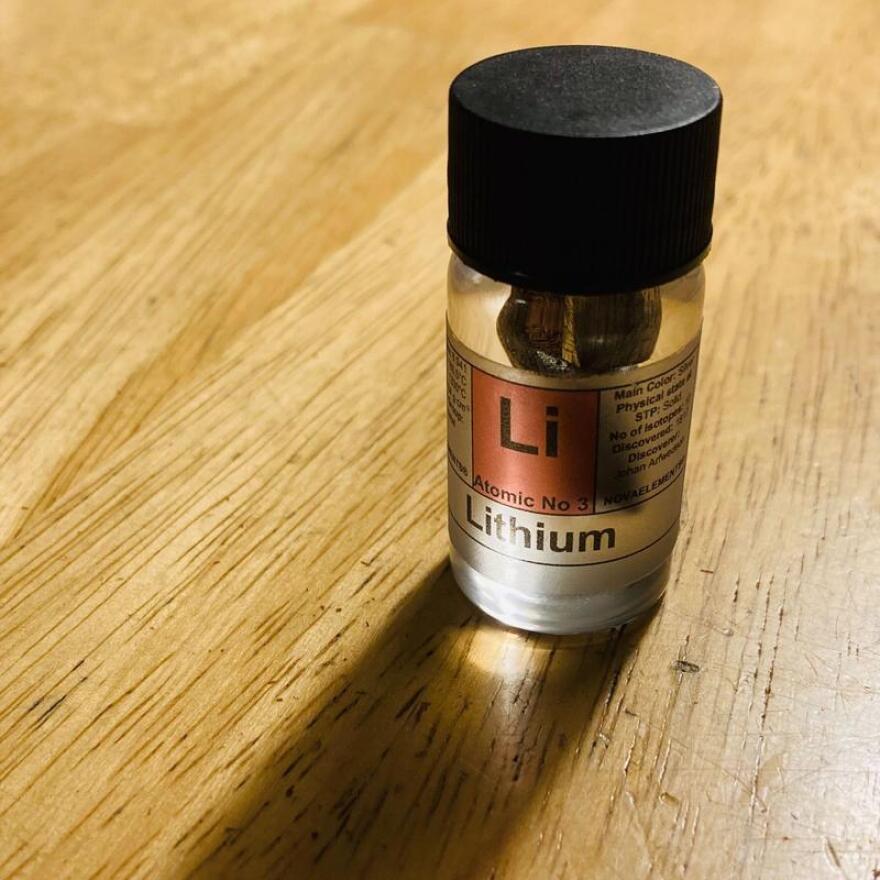In one version of a sustainable, carbon-neutral future, the world’s cars will transition from fossil fuels to electricity. Right now that vision absolutely depends on lithium, a primary component of the lithium-ion battery.
But there is no “Lithium Central Planning Committee” balancing supply and demand, or making sure that lithium is mined in environmentally and socially responsible ways. In fact, there is almost no lithium mining in the United States at all. So where does it all come from? And who is being affected?
Plus, a report detailing how car dealerships and salespeople are inadvertently (and deliberately) turning customers away from electric vehicles.
The Lithium 'Gold Rush'
Taylor Quimby
From the 1950s until the 1980s, nearly all of the world’s lithium was extracted from a pair of mines in North Carolina. But demand has grown. The first commercial product featuring a lithium-ion battery was the Sony Handycam Camcorder. Since then, lithium-fueled products have proliferated across world - digital cameras, laptops, cellphones, and more. Meanwhile, lithium mining in America has become virtually non-existent.
Read a longer print version of this story here.
This story features Emily Hersh, Chloe Holzinger, Patrick Donnelly, Thea Riofrancos, Ramón M. Balcázar, and Julian Brave NoiseCat.
Car Dealerships and Electric Cars: Paving the way, or blocking the road?
Taylor Quimby
Lithium isn’t the only resource required to transition America’s fleet of ICE vehicles to electric.
There’s graphite, manganese, sometimes cobalt and nickel, and less tangible resources too: For example, buy-in from car dealerships and salespeople.
In late 2019, The Sierra Club released a report called Rev Up: A Nationwide Study of the Electric Vehicle Shopping Experience.
579 volunteers, visiting nearly one-thousand dealerships across the country, found that about 75% of dealerships visited didn’t have any electric vehicles to sell.
Hieu Le, the project manager and coauthor of the report, says that even when dealerships did have EVs, they weren’t always charged and available for test drives, or readily visible to customers who were interested.
“Folks would show up and they couldn’t find EVs on the lot even though they were there, but they were buried in the far back of the lot.”
Customers found that some salespeople also failed to provide important information about things like range, charging stations, or what incentives might be available to help reduce the sticker price of the cars available.
Le points out that the economics of the transition could contribute to pushing dealerships away from selling electric cars.
“The revenue model of the dealerships rely heavily on service and maintenance.”
Service and maintenance that, in the case of electric vehicles, isn’t as regular or as expensive as it is with ICE cars. For example, a Chevy Volt or Tesla will never need an oil change.
The Rev Up report has a lot of suggestions about how auto manufacturers and car dealerships can improve the electric car buying experience, but a lot of the big ones are reserved for policy-makers, who Le says have the leverage to incentivize the transition to electric vehicles, and hold automakers accountable to higher standards.
“I think in a lot of ways we have to look at this from the top down, from a structural standpoint, because automakers have spent decades greenwashing claims of sustainability and it shows.








